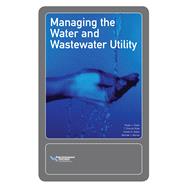Learn from the Masters of Public Utility Management! Roger J. Dolan P.E., DEE, T. Duncan Rose, Robert A. Baker, P.E., and Michael J. Barnes, P.E., speaking from on-the-job experience, stress the importance of leadership and management skills, and the core understanding of the utility business. This book is designed to help transform the specialist into a leader, and is the ideal textbook for the student or young professional studying to become a utility manager.
Gain a foundation of knowledge and an array of experience-based opinions in preparation of successful management career. Highlights include: leadership, budgeting and fiscal control, managing O&M, design and capital improvements and the role of information technology.








